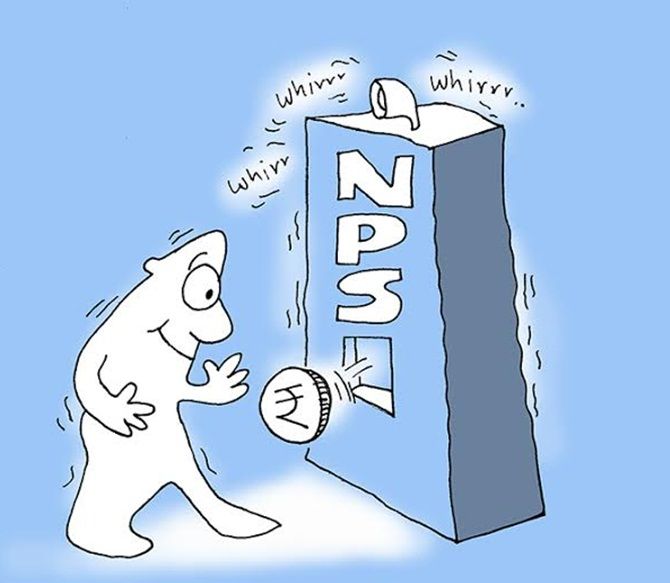Rationalisation in taxation on the retirement scheme puts significant money in the hands of investors.

Finance Minister Arun Jaitley has withdrawn the proposed tax on the employees’ provident fund (EPF).
He, however, said the changes proposed for the National Pension Scheme (NPS) would be tabled in Parliament as they are.
If his proposals are accepted, the NPS will become an attractive avenue for retirement savings than it was earlier.
Until the current financial year, the NPS did not have many voluntary takers despite the government providing an additional deduction of Rs 50,000 under Section 80CCD (1B) of the Income Tax Act.
That’s because the entire corpus was taxable at the time of withdrawal.
Tapati Ghose, partner with Deloitte Haskins & Sells, explains: “According to the structure of the scheme, it is mandatory for an investor to buy an annuity plan with at least 40 per cent of the corpus. One could withdraw the balance amount after paying tax on it.”
Many investors felt that to save tax, they would be forced to buy annuity with the entire money on retirement.
The Budget has rationalised the tax on NPS. While the structure of the scheme remains the same, a person can now withdraw up to 40 per cent of the corpus without paying any tax on it.
And, if a person chooses to withdraw 60 per cent as a lump sum, he will need to pay tax only on 20 per cent of the total corpus. “This is a bonanza for NPS investors,” says Ghose.
Let us examine the following case. A person invests Rs 50,000 every year into NPS to benefit from tax deductions for the next 25 years.
Assume that the person opted for Asset E, wherein 50 per cent of the contribution is allocated to equities, and earns an average annual return of 12 per cent. On retirement, the person will have a kitty of around Rs 75 lakh.
According to the existing provisions, the person will need to buy an annuity with 40 per cent of the corpus, which will be Rs 30 lakh.
If he withdraws the balance amount of Rs 45 lakh, there will be 30 per cent tax, which works out to Rs 13.5 lakh.
The person, then, ends up with a corpus of Rs 31.5 lakh in hand.
If one makes changes to these calculations based on the recommendations in the Budget, the individual will end up with Rs 40.5 lakh in hand.
That is a significant difference of Rs 9 lakh or a saving of 12 per cent, as compared to the existing norms.
Here’s how it works out to be so. The person buys the mandatory annuity plans with Rs 30 lakh (40 per cent of Rs 75 lakh corpus).
Of the remaining money, there will be no tax on Rs 30 lakh (40 per cent of the corpus) on withdrawal.
On the remaining amount of Rs 15 lakh (20 per cent of corpus) the investor will need to pay 30 per cent tax, which will work out to Rs 4.5 lakh.
The total money in hand of the individual thus be Rs 40.5 lakh.
If you are an employee, whose organisation has moved to NPS you will end up with similar savings on your total corpus at the time of retirement.
The returns may or may not be as high as the EPF (depending, among other factors, on the amount you allocate to equities in NPS) but the proposed changes in the Budget will definitely put more money in your hands at the time of retirement.











